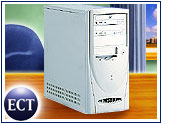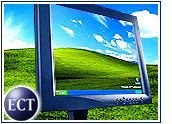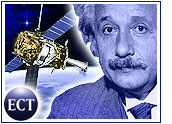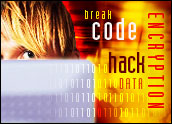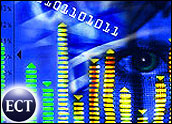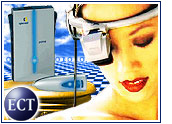
Many an intergalactic sci-fi flick has showcased the “instant translator” — the clever box that makes earthling speech intelligible to alpha-centaurians, and vice versa. Now something similar is helping Australian organizations bring legacy applications and enterprise knowledge up to date. Perhaps the analogy with the instant translator is inexact. A sci-fi instant translator would operate as a kind of middleware; this new kind of translation is more about total “transformation” — turning earthlings into alpha-centaurians.
Fujitsu Australia has teamed with two local companies and has added a couple of its own technologies to offer several options for companies reinventing legacy systems in modern architectures, such as Microsoft’s .NET or Sun’s Java 2 Enterprise Edition.
Organizations around the world depend on their legacy applications and systems, but older systems might not be up to current e-commerce, Web services or other processing standards. With total information sharing as a goal, these older systems often have a hard time producing a consolidated view for customers or disparate business units, and they may not be as flexible or scalable as they need to be.
The first of these strategies, according to Fujitsu senior solutions consultant Chris Gaskin, is NetCOBOL, for organizations using older variants of COBOL but updating those functions to the newer .NET architecture. This Fujitsu offering runs additionally under Linux, Unix and Windows. According to a Hurwitz Group white paper, NetCOBOL “allows COBOL assets to interact with other languages within the .NET framework and to be used to build Web Services.”
The Hurwitz Group paper modeled a typical transformation as costing slightly more than half what it would take to rewrite the applications from the ground up. Those migrating to a new database — such as DB2, Oracle or SQL — says Gaskin, might use ObjectStar Integration Broker, which “enables COBOL programs written for CA-Datacom to be retargeted to DB2 with little or no change to the sources.”
Local Partnerships
The story takes on wider implications with Fujitsu Australia’s partnerships. The company has formed relationships with two companies offering services that transform applications written in just about any older language. Into the system go FORTRAN, COBOL, Java, RPG and PL1, and out come new versions in, for instance, Java, C++, C# or NetCOBOL.
One of these firms is Zensar Technologies. Its origins lie close to Fujitsu: It sprang from a Fujitsu affiliate in India known as International Computers (India). Today, according to Venu Sathiraju, Zensar’s country manager for Australia and New Zealand, it is a global software services organization operating in 18 countries. Zensar’s offering is called Solution BluePrint (SBP) framework. Sathiraju said it provides “an end-to-end solution, which differentiates us from other solution providers.”
Using proven tools to automate the transformation, he said, “the process is driven by a visual-modeling framework. The SBP framework is platform agnostic, enabling the target code to be deployed quickly to .NET or J2EE — giving customers flexibility and also time-to-market advantages.”
Automation is the key word there, and it is central also to the services offered by Fujitsu’s other partner, Quipoz Pty. The principals of this new, small Sydney-based company were involved with several Y2K projects, which meant documenting the source code for at-risk applications and was the genesis of the Quipoz Transformation Engine (Q-TE).
Document and Transform
The process has several stages. According to Gaskin, the prerequisite for these kinds of legacy applications is possession of the intellectual property rights and source code. “The theory is that most companies that have survived the year 2000 will have their source,” he told TechNewsWorld.
“The first stage,” he said, “is to redocument the whole application. This is the bit that really gets people excited, because we give them a guaranteed documentation of their system. Quipoz employs a lexicographer who takes the logic and turns it into English that anyone can read,” he said. “So that if it says, ‘Go to such and such a program,’ the link takes you there, or to a file structure or to a screen. Move your cursor over the top of any item and a little box pops up that describes it and gives information about, and a reference back to, the original code.”
“We normally pause there to allow the customer to look at their system, because now they have a guaranteed view, showing them what their system does — as opposed to what they thought it did,” he said.
Armed with a clear understanding of what the application is and does, customers can decide which modern architecture is best suited to the required functions of their legacy applications, and the automated transformation phase kicks in. Quipoz claims 95 percent of the transformation — which results in new software written to contemporary standards — can be automated. The process automatically translates the associated databases too.
Gaskin recalled that “on one project, we dealt with 3 million lines of code, and only two of those lines could not be automated.”
Tomorrow, the World?
This means that, typically, customers can expect a “freeze” of only about two weeks on application development and maintenance, and typical costs of about half those of the alternatives.
Quipoz managing director Brian Lockyer notes: “We believe we are unique in the world in what we offer. Yes, other organizations are performing the transformation of legacy applications, but to nowhere near the level of automation offered by Quipoz.”
If this approach is really unique, it should be valuable anywhere. Is international expansion on the cards for Quipoz? “Yes,” Lockyer said. “We will be delivering our capability overseas. We are in the process of finalizing a transformation project for one of the major insurance companies in the UK.
“We do the work in our offices in Sydney, taking client code from CD or e-mail and then delivering back the transformed code,” he added. “We will, in the short term, use partners in overseas locations to handle the client liaison and actual application delivery.”
Typical clients to date have included large insurance and financial services companies, telecommunications and government departments.


